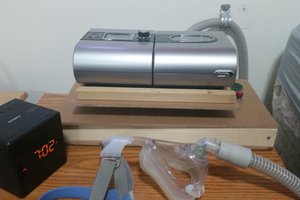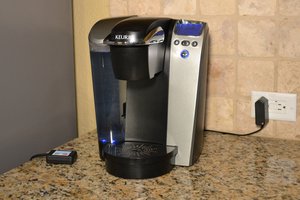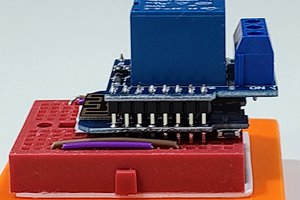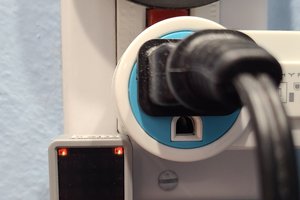This all started with a co-garden with our neighbor. While he had multiple rain barrels, it took a lot of time and effort to fill and carry watering cans. While I had previously made a system to automatically water a limited area (and automatically fill a small water fountain) using city water, I started to realize that this would quickly add up for our new garden (not to mention be a rather wasteful use of treated water). After doing some pondering and research, I realized that getting a large water cube, a pump and some valves would be both simple and not terribly expensive. By no means am I ‘making money’ off this system, the payback is far too long and I’ll be lucky to break-even, but it's strangely satisfying storing and using rainwater for irrigation (and surprisingly, my wife was excited at the idea of having a large quantity of water stored for emergencies, after proper treatment at least). And honestly, the process has been fun which was the primary motivator.
The first thing I did was find what appeared to be a suitable submersible pump and test it out with our neighbor’s rain barrels. Amazon yielded quite a few inexpensive options, so I did some basic research and just picked one. Being Amazon, the specs were lacking a bit but I was able to deduce what the performance ‘should’ be. Somewhat surprisingly, it ‘just worked’ and produced a reasonable amount of flow. This jump-started the rest of the project and resulted in me purchasing and installing some water cubes while I started planning out the rest of the project. As a side note, admittedly, the pump is the component I’m most concerned about when it comes to long-term operation. It won’t run for that many hours, but it will remain submerged all summer. Hopefully the internal components can handle this, but only time will tell. For control of the pump, I just used a relay inside a junction box to control whether the outlet is on, with the pump ultimately plugged into this.
As I began to plan things out, I decided that I also wanted a way to measure how much water was in the tank. After a bit of research, I landed on a water-proof (or at least resistant) ultrasonic sensor. The main drawback of this approach is that the sensor has nearly a foot minimum distance reading. I had originally hoped/planned to just print a tube to offset it, but quickly realized it created sufficient echos that this wouldn’t work. I came across a similar project using the same sensor which gave me the idea of using a cone and proceeded to design and print a mount for my tank. As I suspected, it didn’t work as-is but I was able to add some transparency sheets to make it useable. The problem I ran into before it even made it off my bench, though, was that it was quite finnicky and I couldn’t reliably get it to work on my desk, much less in the wild. Ultimately, I abandoned this approach and just made another mount that had no offset, deciding to live with the blind spot in my data: this roughly translated into me getting good readings from 0-240 gallons and then getting no further data all the way to completely full, or a little over 310 gallons. Not ideal, but it still allows me to avoid running the pump when it’s empty and know for the most part ‘how full’ the tank is.
I decided quite early on that I wanted to add soil moisture sensors, both to allow for automating the watering as well as just keep tabs on things. I have quite a few of the Mi Flora BLE sensors that I use indoors that I’ve had fantastic luck with, and couldn’t come up with any better alternatives for outdoor use. Ultimately, I designed and printed an enclosure to protect them from the rain; time will tell how effective this is, but I’m fairly confident, especially since they’ll only be outside for about half the year and I slathered them with quite a bit of hot glue.
I already had several solenoid valves and soaker hoses from my previous watering project, so I re-purposed these which was rather straight-forward....
Read more » Ben Brooks
Ben Brooks
 Scott Clandinin
Scott Clandinin
 Michael Hamilton
Michael Hamilton
 WJCarpenter
WJCarpenter